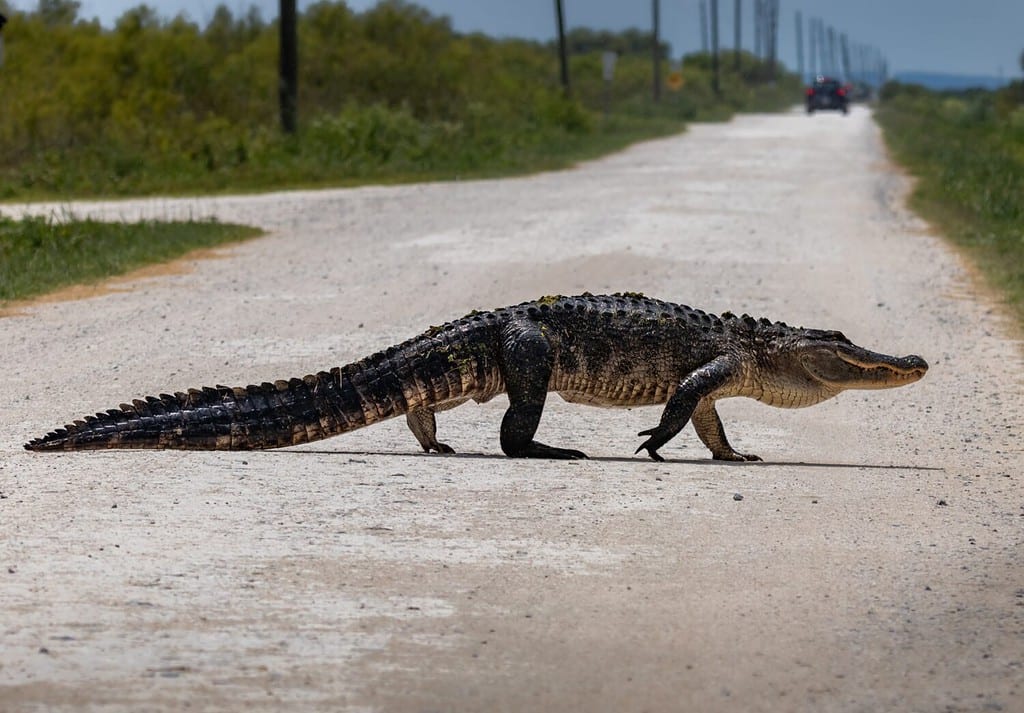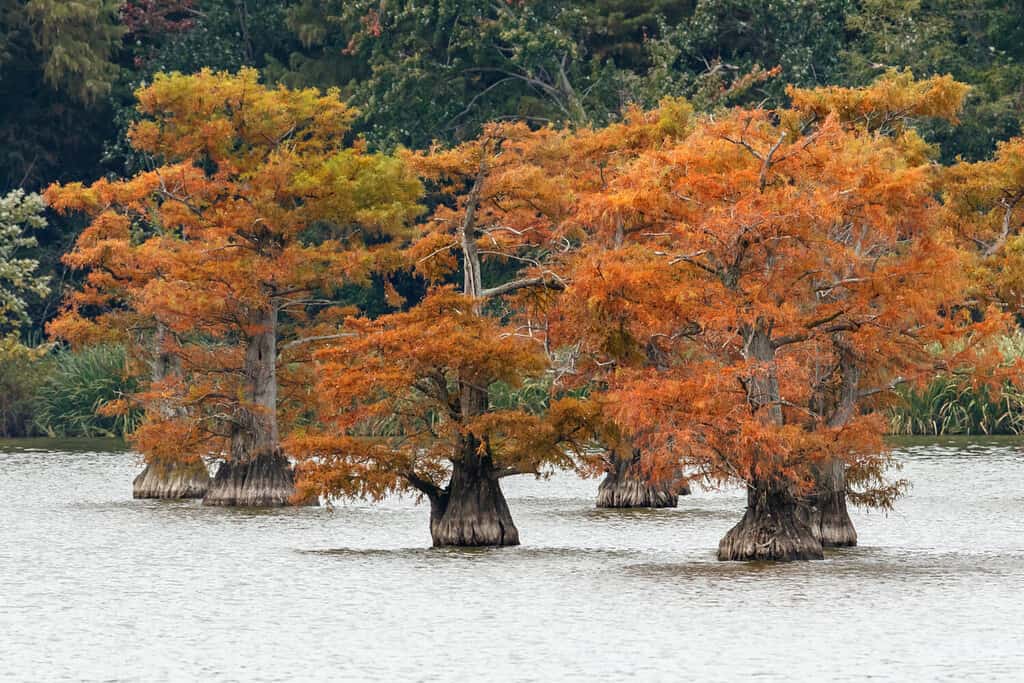Oklahoma and Florida have many differences, but one thing they have in common is that they both are home to a city named Miami. These cities are over 1,400 apart, offering completely different climates and wildlife. While Florida was among the first 13 colonies, Oklahoma didn’t officially become a state until 1907. If you want to see more differences between these two cities, take a look below.
Comparing Miami, Oklahoma vs. Miami, Florida
| Location | Oklahoma | Florida |
| 2022 Population | 12,193 | 435,919 |
| Size | 11.18 square miles | 55.25 square miles |
| Crime Rate, per 1,000 people | 50 | 2 |
| Average Household Income | $51,598 | $79,886 |
| Climate | Mild | Tropical monsoon |
| Common Wildlife | Prairie dogs, armadillos, mice, rats, squirrels, American alligator, raccoons, snakes, coyotes | Alligators, crocodiles, turtles, manatees, Florida panther, gray fox, bottlenose dolphins, sea turtles |
| Native Plants | Cypress trees, oak trees, sumac, coralberry | Seagrape, corn plant, golden pothos, pepper |
| Tourist Attractions | Coleman Theater | South Beach, PortMiami, Barnacle Historic State Park, museums |
| Oldest Building | John Patrick Naughton Barn | The Barnacle |
Differences Between Miami, Oklahoma vs. Miami, Florida
Miami (OK) vs. Miami (FL): Size and Population

With a statewide population of 22.24 million people, Miami only accounts for 2% of the total residents in Florida.
©frederic prochasson/iStock via Getty Images
The small-town feel of Oklahoma’s city is no match for the massive size of Florida’s Miami. In 2022, Oklahoma recorded a total population of 12,193 residents in its city, which only covers 11.18 square miles of the entire state. In Florida, its city has a total population of 435,919 residents, filling the 55.25-square-mile space more densely.
Miami (OK) vs. Miami (FL): Crime Rate
With such a smaller population, most people expect that Oklahoma’s city would have less crime, but that’s not true. In Oklahoma, approximately 50 crimes occur for every 1,000 residents, adding up to about 600 crimes annually.
Despite having substantially more people, the crime rate is lower with 35 crimes per 1,000 residents in the Florida city. Still, it has one of the highest crime rates in the entire country.
Miami (OK) vs. Miami (FL): Average Household Income
With $51,698 annually as the average income for Oklahoma’s city, the poverty rate is still 24.07%. Much of the city is populated by residents in their 30s, and approximately 31% of adults hold a high school diploma with no additional education, while at least 17% hold at least a bachelor’s degree.
Florida’s average household income is much higher – $79,886. The poverty rate is only slightly lower (20.85%), but residents are about 10 years older. Having a college education is more common here since 40% of adults hold at least a bachelor’s degree.
Miami (OK) vs. Miami (FL): Climate
The climate of these two cities drastically differs, especially in moisture levels. In Oklahoma, the climate is mild to moderate. Summers become hot and muggy with moisture in the air. While the winter weather doesn’t last long, it tends to be snowy and windy. It is also less than 200 miles away from Oklahoma City, the home of Tornado Alley.
With a tropical monsoon climate in Florida, the weather is very different. Throughout the summer, the weather stays hot and wet, which is similar to the mugginess of Oklahoma’s city. During the winter, the temperatures rarely drop low enough to see any snow, mostly staying warm and dry. Even into December, temperatures reach an average of 76 to 80 degrees Fahrenheit. Residents also have to plan for hurricane season, which lasts from June to November.
Miami (OK) vs. Miami (FL): Common Wildlife

With variations in the local climate, the wildlife in Florida and Oklahoma has few animals in common, like the American alligator.
©Benjamin Klinger/Shutterstock.com
Oklahoma’s environment creates the perfect home for small mammals like mice, squirrels, raccoons, and rats. Prairie dogs are common in grasslands, staying within their social community as they burrow. Armadillos also burrow, sometimes creating paths that are up to 15 feet long. While you might see a few coyotes, they primarily keep to themselves when they aren’t hunting.
Going down to Florida’s city brings you face-to-face with many land-based and aquatic animals. While gray foxes and the Florida panther prefer land, taking a stroll along the beach puts you closer to aquatic and semi-aquatic wildlife like crocodiles, manatees, and bottlenose dolphins of the Atlantic Ocean. This coastline offers an abundant home for many species of sea turtle species, including loggerhead and leatherback sea turtles.
Miami (OK) vs. Miami (FL): Native Plants

Both cities have their fair share of trees, but the plant hardiness zone in Oklahoma brings an abundance of cypress trees.
©Danita Delimont/Shutterstock.com
Classified as a 7a plant hardiness zone, Oklahoma’s Miami offers a rich terrain for trees. Cypress trees are one of the most common species, but the environment is ideal for several oak species and sumac trees. Coralberry – a shrub with red berries – stays in bloom through the winter, requiring only partial sun, and can grow in moist or dry environments. While this shrub thrives in Oklahoma, it is an invasive and damaging species in Florida.
Going to Florida’s city offers an ideal environment to grow golden pothos, which is also known as devil’s ivy. This plant is robust, reaching an adult length of up to 40 feet. Since the Florida location has a 10b/11a plant hardiness zone, the tropical climate welcomes several varieties of palm trees. However, local officials announced a plan that will gradually remove all but 25% of them, thinning out their population for new growth.
Miami (OK) vs. Miami (FL): Tourist Attractions

While a visit to either city puts you in the center of history, you can only find PortMiami in Florida.
©Phillip Pessar / CC BY 2.0 – License
Tourism is a major part of Florida’s local commerce in this city. Nicknamed the “Gateway to Latin America,” the only city that has more international visitors is New York City. It has plenty of cultural attractions, but PortMiami stands out. It is the world’s busiest port for cruise lines and passengers alike. It ranks third out of every other tourist destination in Florida. If you already visited PortMiami, visit South Beach or one of the local museums. With many places to choose from, Miami brings in over $20 billion in tourist revenue each year.
The main tourist attraction for visitors in Oklahoma is the Coleman Theater. It held its grand opening in April 1929 with 1,600 seats for attendees. With the incredible preservation of this theater, a local theater group uses it for 5 large productions annually. Since 1983, it has been one of the historical places on the National Register for Ottawa County, which also includes the Miami Downtown Historic District.
Miami (OK) vs. Miami (FL): Oldest Building
With a rich history in both states and cities, historical sites tell a tale of what each one was like when it first began. In Oklahoma’s city, the oldest structure you’ll find is the John Patrick Naughton Barn, which was built in 1893 in Ottawa County. However, Modoc Mission Church and Cemetery was built around the same time, earning it a place on the National Register of Historic Places as well by 1980. In Florida, the oldest building is yet another home – The Barnacle – which still stands in the location where it was built in 1891.
Bonus: Miami Is Also A Town In Arizona

This Arizona town earned its fame with an abundance of quartz and turquoise mines.
©Tom Driggers / CC BY 2.0 – License
If you want another Miami to visit, Arizona has a small town named Miami in Gila County. This town was part of the copper boom, founded in 1907. With less than 1 square mile of land, it is significantly smaller than the two Miami locations above with a population of 1,542 during the 2020 Census. Like most of Arizona, it has a hot and dry climate, attracting tourists with the promise of a classic Western experience.
The photo featured at the top of this post is © Ugo Lora/iStock via Getty Images
Thank you for reading! Have some feedback for us? Contact the AZ Animals editorial team.






